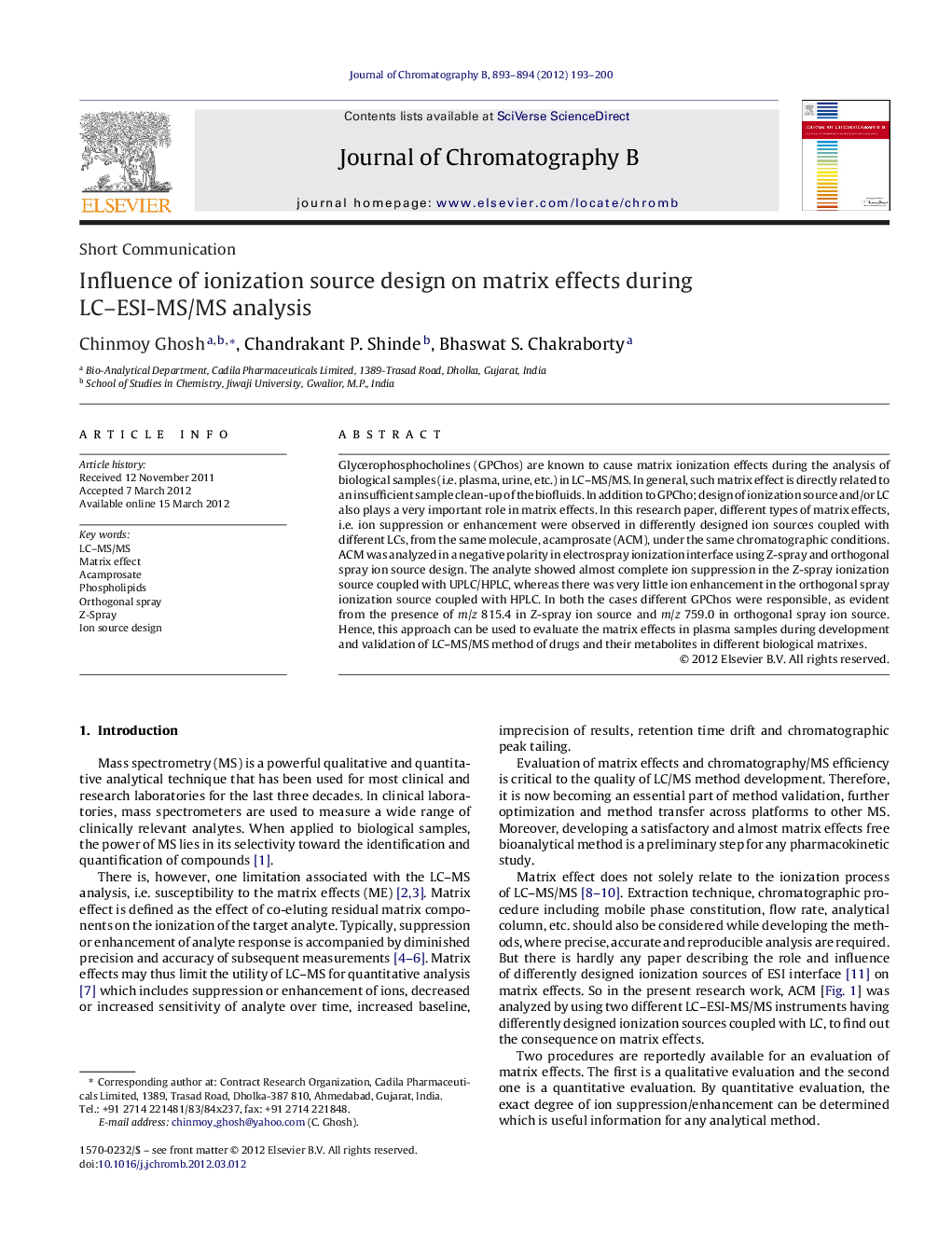| Article ID | Journal | Published Year | Pages | File Type |
|---|---|---|---|---|
| 1214033 | Journal of Chromatography B | 2012 | 8 Pages |
Glycerophosphocholines (GPChos) are known to cause matrix ionization effects during the analysis of biological samples (i.e. plasma, urine, etc.) in LC–MS/MS. In general, such matrix effect is directly related to an insufficient sample clean-up of the biofluids. In addition to GPCho; design of ionization source and/or LC also plays a very important role in matrix effects. In this research paper, different types of matrix effects, i.e. ion suppression or enhancement were observed in differently designed ion sources coupled with different LCs, from the same molecule, acamprosate (ACM), under the same chromatographic conditions. ACM was analyzed in a negative polarity in electrospray ionization interface using Z-spray and orthogonal spray ion source design. The analyte showed almost complete ion suppression in the Z-spray ionization source coupled with UPLC/HPLC, whereas there was very little ion enhancement in the orthogonal spray ionization source coupled with HPLC. In both the cases different GPChos were responsible, as evident from the presence of m/z 815.4 in Z-spray ion source and m/z 759.0 in orthogonal spray ion source. Hence, this approach can be used to evaluate the matrix effects in plasma samples during development and validation of LC–MS/MS method of drugs and their metabolites in different biological matrixes.
► We design a model to study the matrix effects (ME) in different ion source design. ► Different phospholipids were identified in different ion sources causing ME. ► During the experiment Z-spray ion source coupled with UPLC showed more ME. ► Orthogonal spray ion source design coupled with HPLC showed less matrix effects. ► Scope of further research to study the role of ion source design on matrix effects.
